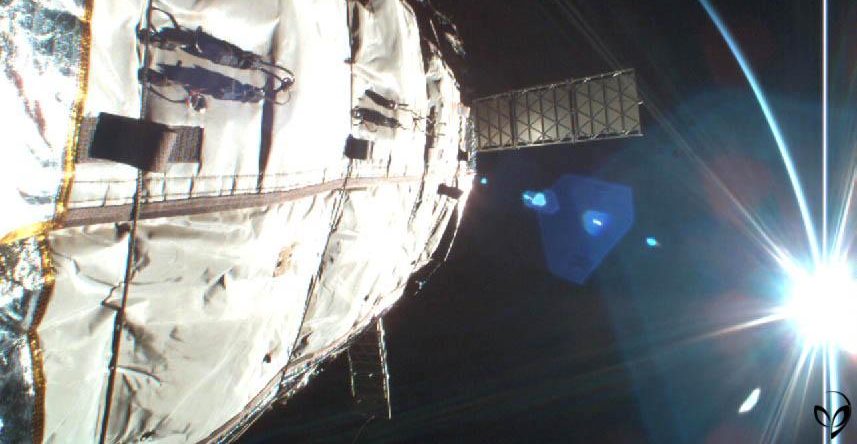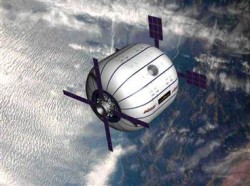After 660 days in space and 10,000 orbits around Earth, the pioneering inflatable prototype is still going strong. Launched atop a converted intercontinental ballistic missile on July 12th, 2006, the Bigelow Aerospace vision for a space hotel is gradually being realized. The first test was to see whether the design could self-inflate and carry out basic operations automatically, but after nearly two years of travelling 270 million miles (435 million kliometers), the prototype has surpassed all expectations and provides an excellent foundation for the company’s first manned mission in 2011…
Bigelow Aerospace, based in Las Vegas, Nevada, has some huge aspirations. The company was founded in 1999 by hotelier Robert Bigelow in the aim to be the forerunner in the future of space commerce and space hotel designs. In a statement on their project website, the company states, “Bigelow Aerospace is dedicated to developing next-generation crewed space complexes to revolutionize space commerce and open up the final frontier to all of humanity“. Well, it seems the frontier has come a little bit closer after today’s announcement that Genesis I, an unmanned prototype of an inflatable space vessel, has just completed its 10,000th orbit around the Earth.
The company is exploiting an old NASA concept, to keep launch mass and size low, but optimize volume in space. The expandable module concept has a structure that uses a flexible outer shell that allows the module to be “unpacked” or inflated once inserted into orbit. Having an inflatable module may conjure up thoughts of flimsiness or weakness – this is obviously not the case as the prototype pushes on after two years of tests. The inflatable design also allows for a larger volume for astronauts to work and live it, with obvious applications for space tourism and orbital hotels. At first, the expandable module was proposed and designed by NASA for the “Transhab Program”, but it was cancelled, allowing Bigelow Aerospace to take over the project and become sole producer of NASA’s expandable module technologies.
Genesis I was followed by the launch of Genesis II in June 2007. Genesis II is also functioning as designed, but today belongs to the older vehicle. The Genesis prototypes measure 14 feet (4.4 meters) in length and 8 feet (2.5 meters) in diameter; they are one-third scale versions of the company’s future BA-330 modules to be used for manned missions.
In addition to this landmark 10,000th orbit, Genesis 1 has taken over 14,000 images and its highly efficient solar panels have provided continuous power to the ship for 15,840 hours.
Around 2011, Bigelow Aerospace hopes to establish its first crewed space station with its Sundancer module (pictured).
Sources: Bigalow Aerospace, Space.com



Bigelow, great job. I’ve been watching.
I love nasa, but they move to slow. We should
have been on Mars by now. I think private
industry may be the way to go. Keep up the
good work.
Well private partnershiops may be the way forward
NASA is essentially publicly funded (or at least part of its operations are, please correct me if I’m wrong), so their tied down by politics & red tape.
The pictue doesn’t look as impressive as artist impression, but I admit the reality’s a hell of an acheivement.
This is really cool, howver, is there some kind of docking mechanism so passengers can enter it, plus, without gravity, you cant stay long. I think in order of the advancement of humans and space, the world needs to pull all thier resources together to co-operate. Hmmmm… UN space program?